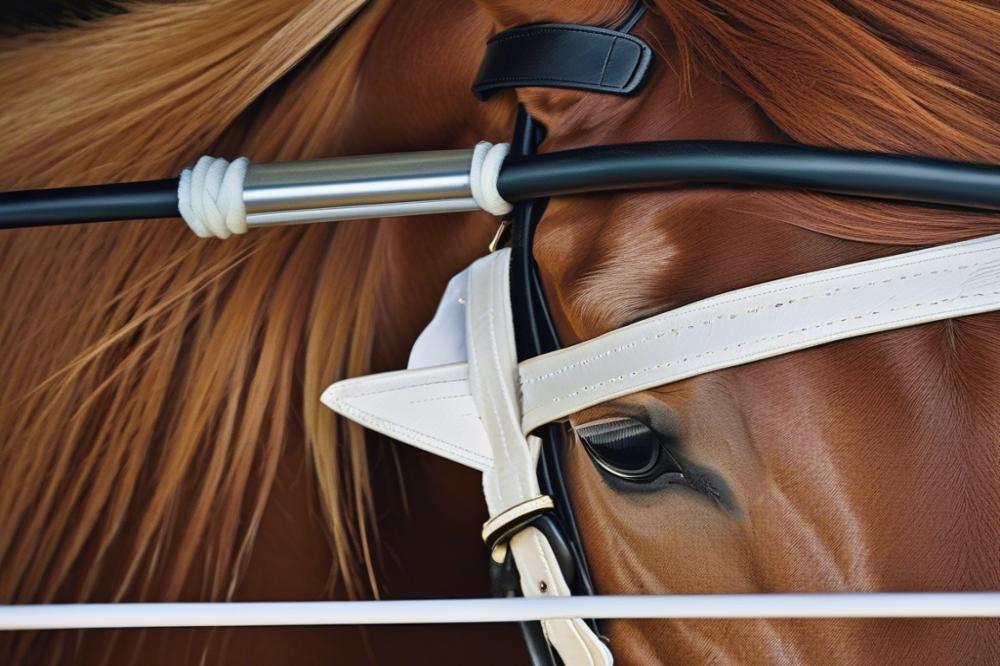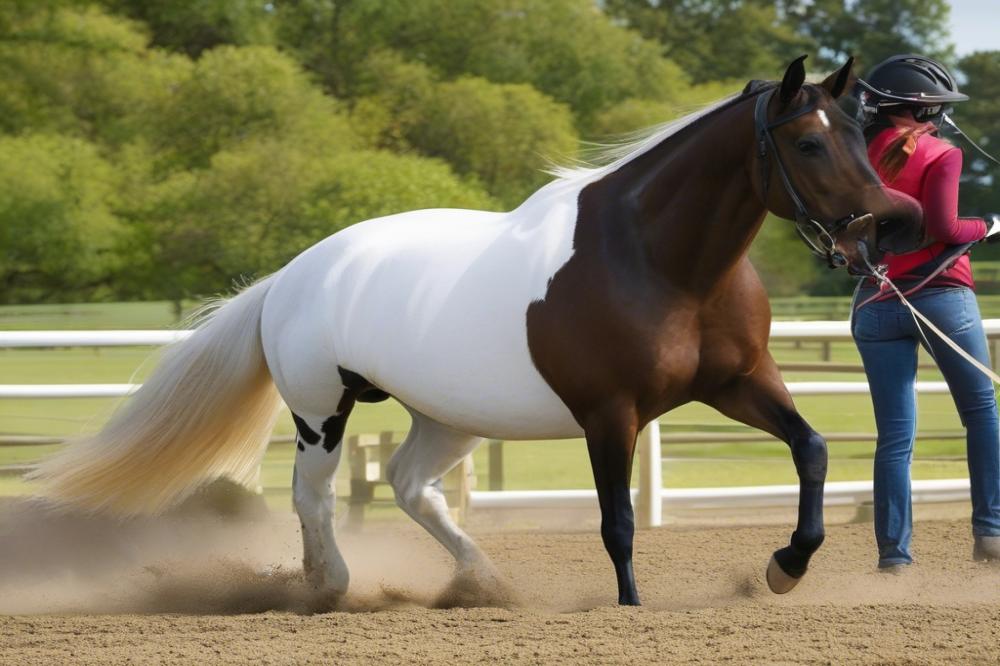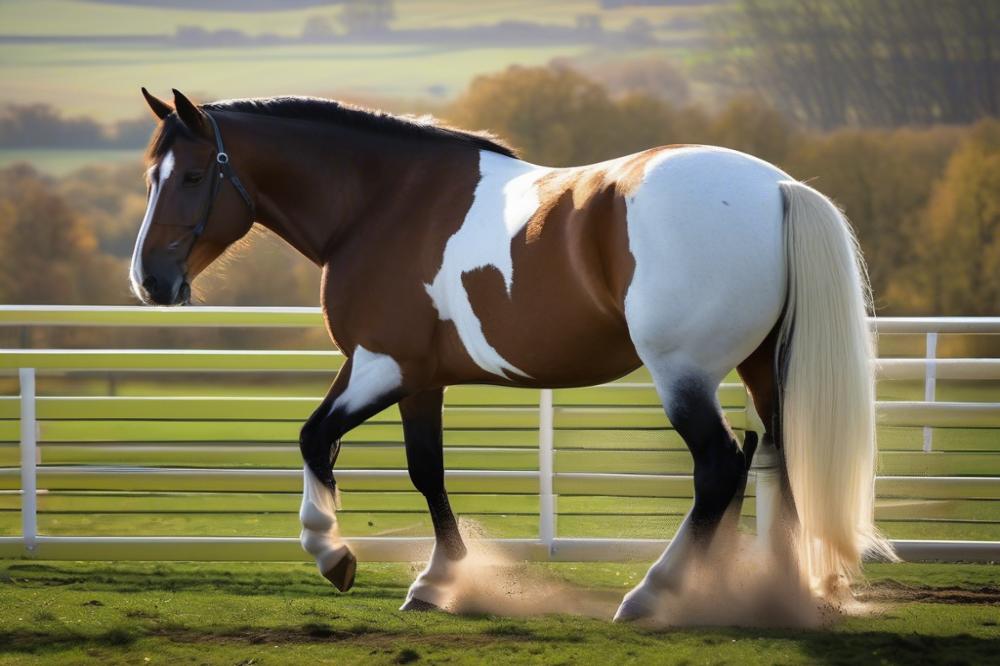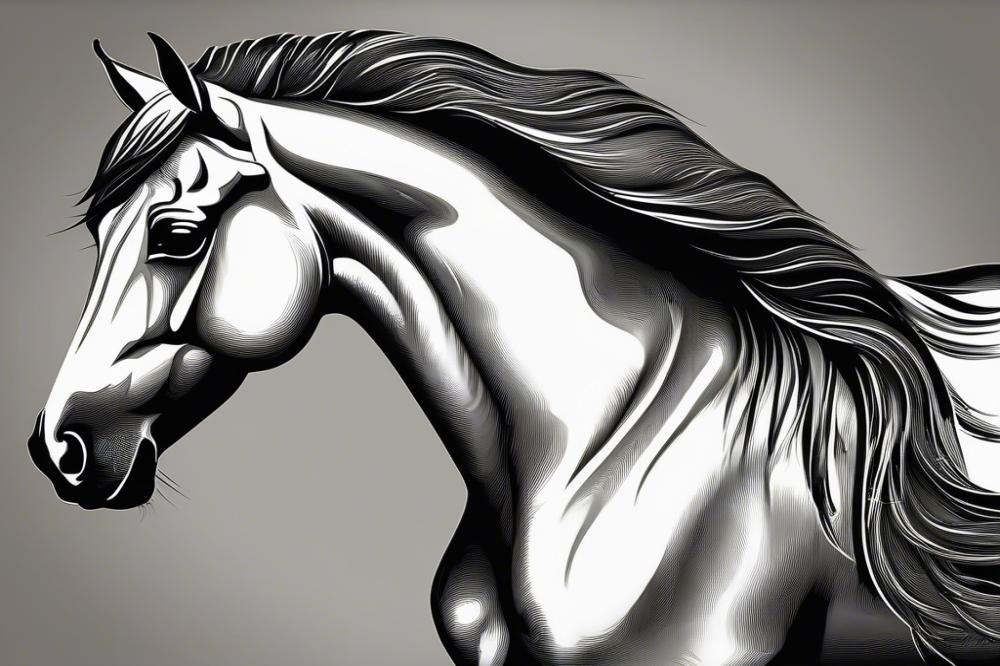Overview of Degenerative Suspensory Ligament Disease in Horses
Imagine your horse galloping freely across the field, mane flowing like the wind. Now think about what happens if a sneaky condition, like degenerative suspensory ligament disease, comes lurking around. This issue is like a thief in the night, quietly causing damage and discomfort. As horse owners and caretakers, understanding this equine ailment is crucial. It can really make a difference in your horse’s performance and overall happiness.
Ligament disease isn’t just a term thrown around in veterinary offices; it encapsulates a range of equine issues that can affect your horse’s ability to move gracefully. You might be wondering, how does it develop? Well, age, repeated strain, and even unique environmental factors can play a role. Horses use their suspensory ligaments every day, supporting their legs as they run, jump, and frolic. So, you can see how important these structures are.
Why Understanding This Condition Matters
Familiarizing yourself with degenerative suspensory ligament disease impacts horse care on multiple levels. When you know the signs—like swelling, lameness, or reluctance to exercise—you can jump into action sooner. Early detection often leads to better horse treatment options. A stitch in time saves nine, as they say! With the right knowledge, you can monitor your equine friend and keep those pesky symptoms at bay.
Moreover, every horse owner will agree that our four-legged companions bring joy, quite the personality, and sometimes, mischief into our lives. When a horse faces health challenges, it can be tough on both of you. Think of it this way: just like a superhero in a blockbuster movie, your horse is always battling unseen foes—these threats are the dreaded horse predators that lurk in the form of diseases. Being proactive in understanding ligament disease equips you with the tools you need to be your horse’s hero.
Finally, consider how branding on horses can indicate a lifetime of dedication to their wellness. The relationship between a rider and their mount is akin to a fine-tuned instrument; you want to catch any sign of trouble before it strikes a sour note. So, as you dive into this topic, remember: knowledge is your best friend when it comes to keeping your equine partner healthy and thriving.
Definition and Background

What is degenerative suspensory ligament disease in horses
Degenerative suspensory ligament disease in horses refers to a condition that affects a crucial part of a horse’s leg. It happens when the suspensory ligament, which supports the fetlock joint, starts to wear down over time. Imagine a rubber band that stretches too much and loses its elasticity. That’s somewhat similar to what occurs with this ligament. This problem can lead to pain and performance issues for our equine friends. Horse health can significantly decline if the condition isn’t addressed properly, making understanding this issue important for horse care.
Anatomy of the suspensory ligament
The suspensory ligament is like a sturdy cable connecting the horse’s leg components. Located between the knee and the fetlock, this ligament plays a key role in supporting the horse while it runs or jumps. Composed of fibrous tissue, it absorbs shock and helps keep the horse balanced. Think of it as the safety belt that secures everything in place. When things go wrong with such an essential part, it can lead to various equine issues that affect mobility and overall well-being.
Differences between acute and degenerative forms
Acute suspensory ligament injuries occur suddenly, often due to trauma or excessive strain. They can be quite painful, leaving horses limping or unable to move normally. Typically, these injuries result from a single event, like a slip or a fall. On the other hand, degenerative cases develop gradually. They tend to be less noticeable at first, sneaking up on both the horse and its owner. These chronic problems can come from repeated stress or an aging horse. Treatment methods vary based on the type of injury, so recognizing the signs early can greatly affect a horse’s recovery.
When it comes to horse treatment, understanding the difference between acute and degenerative is vital. Owners should monitor their horses for any signs of distress. Just like any athlete, a horse’s performance can decline without proper attention to its health. Symptoms might not always scream for help, so a keen eye can make all the difference in catching issues before they escalate.
Causes and Risk Factors

Potential Causes of Degenerative Suspensory Ligament Disease
When we talk about degenerative suspensory ligament disease in horses, it’s important to understand what might cause this condition. One main culprit is repetitive stress. Just like humans, horses can develop injuries from overuse. Horses engaged in intense activities, such as racing or jumping, put extra strain on their ligaments. Over time, this wear and tear leads to problems.
Genetic Predispositions
Some horses may be born with a genetic makeup that puts them at risk for ligament issues. If a horse’s parents had similar problems, it might not be a coincidence. Certain breeds carry higher chances of developing equine health problems. It’s like inheriting a family history of bad knees. Recognizing these genetic links can help in managing horse care more effectively.
Environmental Influences and Management Practices
Let’s not forget about the surrounding environment. Horses don’t live in a bubble; every little thing counts. Poor footing in a pasture can lead to slips and falls, increasing the risk of ligament injury. Proper training methods also play a critical role. Bad training routines can push a horse too hard, too fast. Balanced exercise routines are key to promoting horse health.
Feeding and nutrition are other important aspects. A well-rounded diet keeps muscles and ligaments strong. If a horse isn’t getting the right nutrients, that could lead to issues down the road. Owners need to be savvy about horse treatment. Regular check-ups with a vet can catch problems early. They say an ounce of prevention is worth a pound of cure, and that couldn’t be truer for equine issues.
Ultimately, watching for these factors can make a big difference. Each horse is unique, and understanding their needs is crucial for keeping them healthy and active. Knowledge is power, and for horse owners, it’s also a lot of responsibility!
Symptoms and Diagnosis

Common Clinical Signs of the Disease
Have you ever noticed your horse limping around the paddock? That can be one of the first signs something is off. Horses may also show swelling in the area of the suspensory ligament. If your equine companion seems stiff or has difficulty making sharp turns, take note. You might see changes in their performance, too. A horse that could once gallop freely might hesitate or seem reluctant to jump.
Sometimes, they may even have heat in their legs. If you’ve ever touched a horse’s leg and felt warmth, you know that something might be brewing. Behavioral changes are common as well. A usually friendly horse may act grumpy or skittish. All these signs together can indicate that something isn’t right with their leg.
How Veterinarians Diagnose the Condition
When you take your horse to the vet, they’ll start by asking questions about what you’ve observed. It’s a bit like detective work! Your input is vital in piecing together the puzzle of their health. After gathering background information, a thorough physical examination follows. The vet will check the legs for tenderness and swelling.
Only after that can they make a more informed decision on what’s happening. Sometimes, they may even want to put together a plan for further evaluation. Blood tests could be ordered to rule out other health issues, but that’s just part of the process. With well-trained eyes, vets can often identify equine issues that the untrained eye might miss.
Imaging Techniques Used for Evaluation
Evaluating suspensory ligament health can require some special tools. Many veterinarians rely on ultrasound. This method lets them see the tissues and any changes inside the leg. It can show the vet if the ligament is thickened or if there’s any damage. MRI is another option, providing images with even greater detail.
Using MRI can uncover hidden problems that might not show up with other methods. Think of it as getting a detailed map of your horse’s leg! These imaging techniques play a significant role in diagnosing ligament disease. They help direct treatment, ensuring your horse gets the care they need. The right diagnosis can mean a more effective recovery path, making the journey back to horse health smoother.
Treatment Options
Conservative Management Strategies
Managing degenerative suspensory ligament disease in horses often starts with conservative methods. Rest is one of the simplest and most effective treatment options. Just like humans, horses need time away from their usual activities to heal properly. It’s also crucial to reduce their workload gradually to avoid putting stress back on their ligaments too soon. Your vet might recommend anti-inflammatory medications to keep pain and swelling at bay. Ice packs can provide immediate relief and help soothe any inflammation.
Changing the horse’s diet can also be important. A balanced diet supports overall equine health and plays a role in the healing process. Supplements with high-quality nutrients may aid recovery too. Remember to keep an eye on your horse’s weight, as keeping them fit is part of the game.
Surgical Interventions
Sometimes, despite best efforts, surgery becomes necessary. Surgical interventions can seem daunting, but progress in veterinary medicine has made many procedures quite routine. Your vet will determine if surgery is the best route based on the severity of the ligament disease.
In many cases, surgeons might perform a procedure called neurectomy to relieve pain. This involves cutting certain nerves to reduce discomfort. Remember though, surgery isn’t an instant fix. Healing will take time, and strict post-op care is essential.
Rehabilitation and Recovery Programs
Following any treatment, rehabilitation is vital in helping horses bounce back to their best selves. Developing a tailored recovery plan with your veterinarian ensures the best approach for your horse. Gradual reintroduction of exercise can help strengthen the ligaments over time. Physical therapy might include gentle stretching and controlled movement.
Patience is key during this time. Horses have their own timeline for recovery, and forcing progress can lead to setbacks. Owners need to check in frequently with vets to track progress and adjust the rehab plan as needed.
Role of Alternative Therapies
When it comes to horse care, alternative therapies often serve as a great support. Some horse owners have found success with Platelet-Rich Plasma (PRP) therapy. This technique uses the horse’s own blood to promote healing in injured areas. Many are excited about its potential benefits when dealing with ligament issues.
Shockwave therapy is another option, acting like a gentle earthquake for the ligaments. It stimulates healing by delivering acoustic waves to the affected area. Many horses tolerate these treatments well, often showing improvements in function and comfort.
In the world of equine health, keeping an open mind about various treatment options is essential. Combining traditional veterinary medicine with alternate therapies might just lead to better overall results. Consult your veterinarian to explore what might work best for your horse’s unique situation.
Prevention and Management
Preventative Measures for Reducing Risk
Maintaining good health in horses is like tightening a screw before it falls apart. A solid foundation in horse care can go a long way in minimizing the risk of ligament disease. Regular exercise is key. It promotes flexibility and builds strength. However, overdoing it can lead to trouble. Balance is essential. Keep an eye on the surface horses work on, too. Uneven ground can be a recipe for disaster.
Proper nutrition also plays a vital role. A diet rich in vitamins and minerals supports overall equine health. Do remember to tailor the feed to your horse’s specific needs. Too much of one thing, or not enough of another, can easily lead to issues down the road. Always consult with a vet about the best feeding practices.
Importance of Regular Veterinary Check-Ups
Can you think of anything worse than a horse suffering because of neglect? Regular visits from a veterinarian can catch problems before they become serious. These check-ups can help identify early signs of degenerative suspensory ligament disease. Your vet can evaluate movement and assess any areas of concern. Just like a doctor for us humans, a vet can offer invaluable advice tailored to your horse’s needs.
Consider it a routine, just like brushing your teeth. No one wants to deal with nasty surprises. Building a good relationship with your veterinarian can pay off immensely. They can provide insights into equine issues that you may not have considered. Being proactive is always better than being reactive when it comes to horse health.
Training and Conditioning Practices to Protect Suspensory Ligaments
Let’s talk about training. It’s akin to laying bricks on a sturdy base. Build strength gradually. Start with lighter workouts, then increase the intensity as your horse becomes more conditioned. This step-by-step approach helps prevent unnecessary stress. Variety in training keeps things interesting and prevents overuse injuries, too. Mixing in different types of activities gets those ligaments working in various ways.
Don’t forget about warm-ups and cool-downs. They are not just fancy terms. These practices can significantly reduce the risk of injury. Stretching exercises can be particularly beneficial. They keep those muscles limber and ready to go. Just like we feel better when we stretch before a workout, our four-legged friends do, too.
Finally, listen to your horse’s body language. An occasional twitch, a lift of the leg, or a grunt can signal discomfort. If something seems off, it probably is. Taking action early can keep bigger problems at bay. By keeping a keen eye on your horse, you can make informed decisions that favor their long-term health and happiness.
Prognosis and Long-term Care
Expected Outcomes for Horses Diagnosed with the Disease
It’s important to understand what the future might hold for horses battling ligament disease. Some horses can bounce back, while others may face more challenges. Many variables come into play. Age, overall health, and the severity of the condition can significantly impact their recovery. Generally, a horse with mild signs might get back to its old tricks in a few months with proper care. On the other hand, a more severe case could mean a longer road ahead. Thus, not every journey is the same.
Factors Influencing Recovery and Return to Activity
Several elements influence how well a horse can recover. The skill of the veterinarian plays a big role. An experienced vet understands the ins and outs of equine health. They can recommend a treatment plan to help the horse improve. The owner’s commitment is equally crucial. Consistent check-ups, following the vet’s advice, and being mindful of the horse’s needs matter a lot. Trainers and caregivers should monitor the horse’s behavior closely. Sometimes a small change can signal a big issue. Also, factors like nutrition and exercise routines can make or break the recovery process.
Long-term Management Strategies for Affected Horses
Keeping a keen eye on horse care is essential for those dealing with degenerative suspensory ligament issues. Regular vet visits should become a new norm. This helps to catch any problems early. Creating a tailored exercise program is a great way to keep things on track. Low-impact activities can keep the horse moving without risking further injury. While stall rest might be necessary initially, eventually, gentle exercises can promote healing.
Nutrition cannot be overlooked either. A balanced diet supports strong ligaments and overall horse health. Supplements specifically designed for ligaments may aid in recovery, too. They provide extra nutrients that can help rebuild strength after an injury.
Another consideration is the horse’s mental state. Keeping their spirits high is important. Engaging activities can provide stimulation and help avoid boredom. Involving the horse in light work or even simple bonding exercises helps maintain a good relationship between horse and handler.
In summary, this condition can present unique challenges for horse owners. However, with diligent care and the right strategies, many horses can live healthy, fulfilling lives despite their diagnosis. Remember, patience is key, and a little humor goes a long way in making the journey smoother.
Final Thoughts on Keeping Your Horse Healthy
When we look back at what we’ve covered regarding degenerative suspensory ligament disease in horses, it becomes clear that early detection is the key to a happy and healthy life for our equine friends. This isn’t just a fancy term; it’s a serious issue that can impact the quality of life for many horses. Observing your horse daily can pay off tremendously. Small changes in behavior or movement are like the early warning signs of a storm on the horizon.
The importance of regular veterinary check-ups can’t be understated either. Just like keeping a close eye on a garden can help catch small weeds before they take over, being proactive in our horse care can help catch issues before they escalate into bigger problems. Should you notice any signs of discomfort or unusual behavior, don’t hesitate to consult a veterinarian. Your horse might appreciate it more than you know!
As horse owners, we have a responsibility to stay informed about our horses’ health needs. Think of it as being a detective, investigating the daily life of your equine buddy. Regularly learning about horse care practices can help you provide the best support possible. For example, understanding horse grooming brushes and uses can make grooming time a bonding experience rather than just a chore. You might even learn that your horse enjoys a good scratch in exactly the right spot!
Let’s not forget a humorous analogy here: caring for a horse can sometimes feel like a “donkey vs mule” debate. One may have its strengths over the other, but proper care is essential for both. Riding off into the sunset with your horse depends on the foundation of health and well-being you build together.
Ultimately, staying proactive and watching for changes can mean the world to your horse. We encourage all horse owners to do a little research, chat with fellow equestrians, and invest time in learning. With your passion and knowledge, you can be your horse’s best advocate, ensuring their comfort and joy for many years to come.



